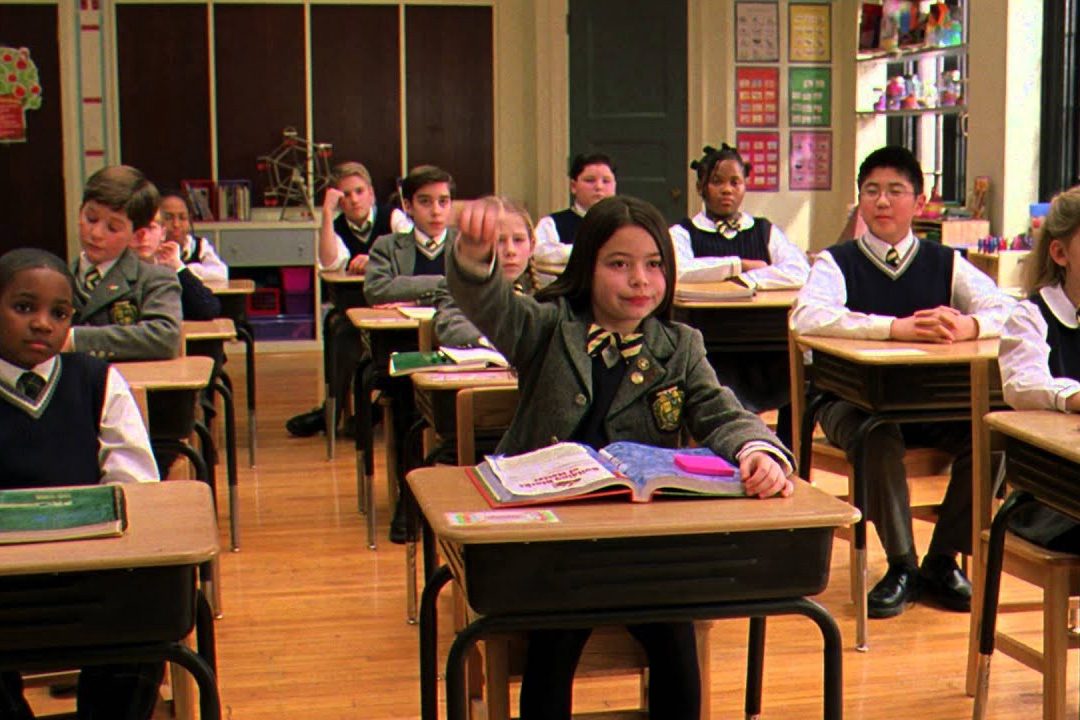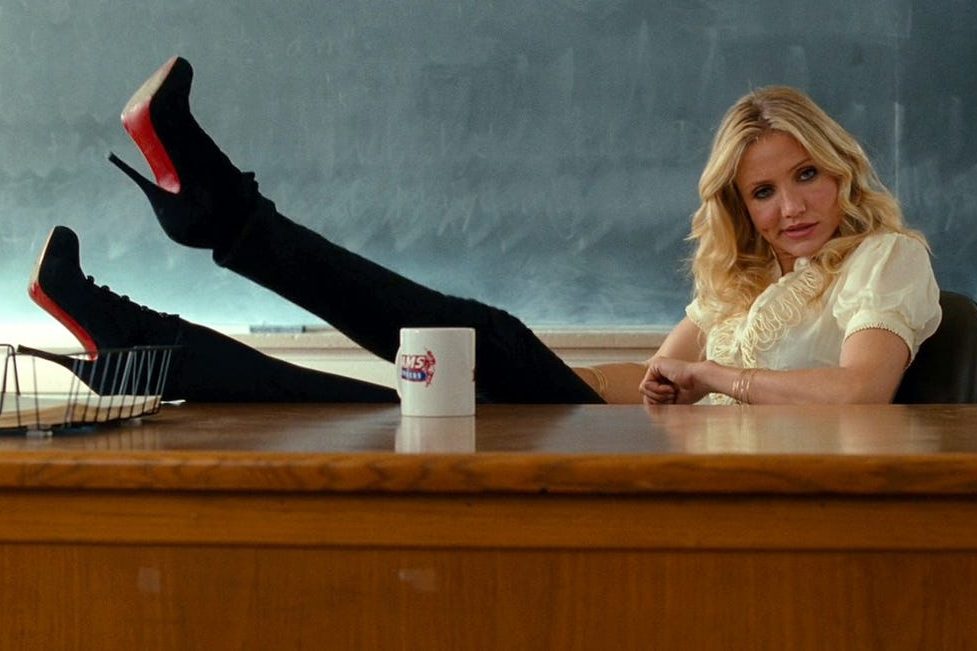What Is Restorative Justice And Why Is It Being Used On Your Child?
For most school districts a punitive discipline system is what’s being used to handle those students who just can’t seem to find their way out of trouble. You break a rule, you pay with detention or suspension. There are some schools, though, that prefer something called restorative justice system to handle the trouble students find themselves in. What is it? Here's what we know about restorative justice.
For most school districts a punitive discipline system is what’s being used to handle those students who just can’t seem to find their way out of trouble. You break a rule, you pay with detention or suspension. There are some schools, though, that prefer something called restorative justice system to handle the trouble students find themselves in. What is it? Here’s what we know about restorative justice.
Restorative justice is not a new idea. Its theory has been around for centuries, but the term was first brought to modern usage in 1977 when Albert Eglash introduced it. In his definition, Eglash said that restorative justice was based on restitution whose solutions stemmed from the victim’s and offenders’ input.
According to Ron Claassen, a pioneer in the restorative justice field, “Restorative justice is a fundamental change in how you respond to rule violations and misbehavior.” He then continued, “The typical response to bad behavior is punishment. Restorative justice resolves disciplinary problems in a cooperative and constructive way.”
How Schools Use Restorative Justice

Schools, like one in Oakland, California, use a three-tiered approach of restorative justice that focuses on prevention, intervention, and reintegration.
The first tier, prevention, uses community-building as their preventative measure. In it, you will find teachers or peer facilitators leading students in a safe circle where they are allowed to share with fellow students their goals as well as their fears.
The students are a key part of creating an open climate. They begin the school year, along with their teachers, by creating a classroom respect agreement. Each student agrees to be held accountable for their actions. These contracts have proven to be very effective in maintaining a respectful balance in the classroom.
The second tier, intervention, is what comes when a student breaks their rules and harms another student. Traditionally, in the punitive discipline system, this is the time when punishment is handed out. But in the restorative justice system, punishment is replaced by mediation. The student who caused trouble is allowed to come forward, to own and acknowledge what they did as being wrong, and then have a chance to make things right. They meet with those they offended along with a mediator, who usually is a teacher.
Through this mediation, ideally everyone is able to grasp what happened and why. They discuss just how the problem can be fixed. The students come up with their own plan to repair the harm and how they fulfill this plan. The whole idea is about building and rebuilding relationships. How do you repair the wrong that you inflicted? It also teaches forgiveness, which sometimes can be a difficult concept for some.
The third tier is reintegration. This tier is for those kids who have been absent from school due to things such as suspension, expulsion, truancy, or incarceration. Coming back from this can be quite a challenge for some. Quite often, especially in traditional punitive discipline systems, a student will return bitter and find themselves repeating their crime or dropping out of school altogether.
The restorative justice system is set to help these students reacquaint themselves with school, offering major support right from the start. Staff and other students will understand particular students’ challenges as they promote accountability and achievement.
Advocates Voice Support
Roxanne Claassen is a restorative justice advocate, the wife of Ron Claassen and she is also an elementary school teacher. She decided she had seen just how much success her husband has had with his work in the juvenile justice system, so she decided to try it out in her classroom.
Article continues below headlines

The Best Type Of Butter Dish For Your Home Kitchen
The history of the butter dish is intertwined with the history of butter itself and the evolution of dining etiquette. …
Continue reading "The Best Type Of Butter Dish For Your Home Kitchen"
The post The Best Type Of Butter Dish For Your Home Kitchen appeared first on Tell Me Best.
Continue
Scientists Prepare For Hazardous Asteroid Heading Towards Earth | GIANT FREAKIN ROBOT
In five years, the asteroid dubbed Apophis will make a scarily close pass by Earth, and scientists are getting ready …Continue reading "Scientists Prepare For Hazardous Asteroid Heading Towards Earth"
ContinueShe first worked with her young students to come up with their respective agreements. Together, the students worked to determine how they would treat each other in order to create and maintain a positive classroom. If a student ended up violating the agreement they all signed, then she would remind the student of the agreement and then ask them if they were still wanting to honor it. For the most part, the student did want to honor it, solving the problem right then and there.
If Roxanne found that the student continued to have the problem, she would work with the student to find a solution. Her main emphasis in trying to come up with an answer was to let the student know that she was on their side. She wanted to let the student know that she wasn’t against them but that she was for them, wanting them to succeed.
As Roxanne noted, there are many benefits to the restorative justice system. She said by introducing it to her classroom she sees much less stress from the students. Her overall relationships with the kids improved dramatically. She also noted that she has had much more time to spend teaching than having to deal with unruly kids.
Ron points out that “When you have a punitive system, the automatic response is to deny responsibility because you know you’ll get punished. With a restorative justice system, the incentive is to admit what you did because you know there’s going to be a restorative process to make things right.”
Still, schools in districts like the Oakland Unified School District, as well as Chicago Public Schools (who also use it) claim to have seen real change and benefits across the board. They do acknowledge that time, money, and enthusiasm to get behind the new system lagged at first, but once they got it implemented, they insist that a big change was seen.
The Problem With Restorative Justice

But not everyone sees the benefits from a restorative justice system. Some point out that for this to work, you need buy-in from all involved. If the offender doesn’t wish to accept blame and offer restitution, then the system won’t work. At that point classrooms either get totally out of control or the school wakes up and goes back to the traditional punitive justice system.
One big problem critics point to is the lack of accountability in a restorative justice system. Students who do something wrong are never really held accountable for their actions and that means they may not actually learn their lesson. Meanwhile, victims can be left feeling exposed and even blamed for something that’s been done to them by someone else.
Critics point out that restorative justice only works if everyone involved buys in all the time. And if you’ve ever been around kids, then you know that getting that level of buy in from them is pretty unrealistic. It’s probably too much to ask, even from adults.
Does Restorative Justice Actually Work?
On paper, it all sounds good. But what about the real world? Does this model work? Is restorative justice a system that should get more attention?
Anecdotally parents with children in restorative justice schools have reported consistently disruptive behavior in classes which prevent their students from learning. There have been frequent reports of incidents where a student acts out and instead of getting them to stop, the teacher makes the entire class leave the room to allow the troubled student to simply continue what he’s doing. Meanwhile, the class just stops learning. For teachers it’s probably easier to just go sit in the hall and look at their phone rather than dish out punitive measures to a troubled student, so it’s easy to understand why they might prefer this method. Parents and educators opposed to the system say it’s not clear how simply letting an unruly student who doesn’t buy in to the restorative justice system simply do whatever he or she wants.
So it’s not clear that restorative justice actually works that well, and on top of that, it’s really expensive. More time and more money are required to get this program running. Training is necessary for the teachers involved to get them to understand and properly use the principles of restorative justice. With as much as teachers currently have on their plates, this many times is a big ask in getting them to introduce something new to their class.







